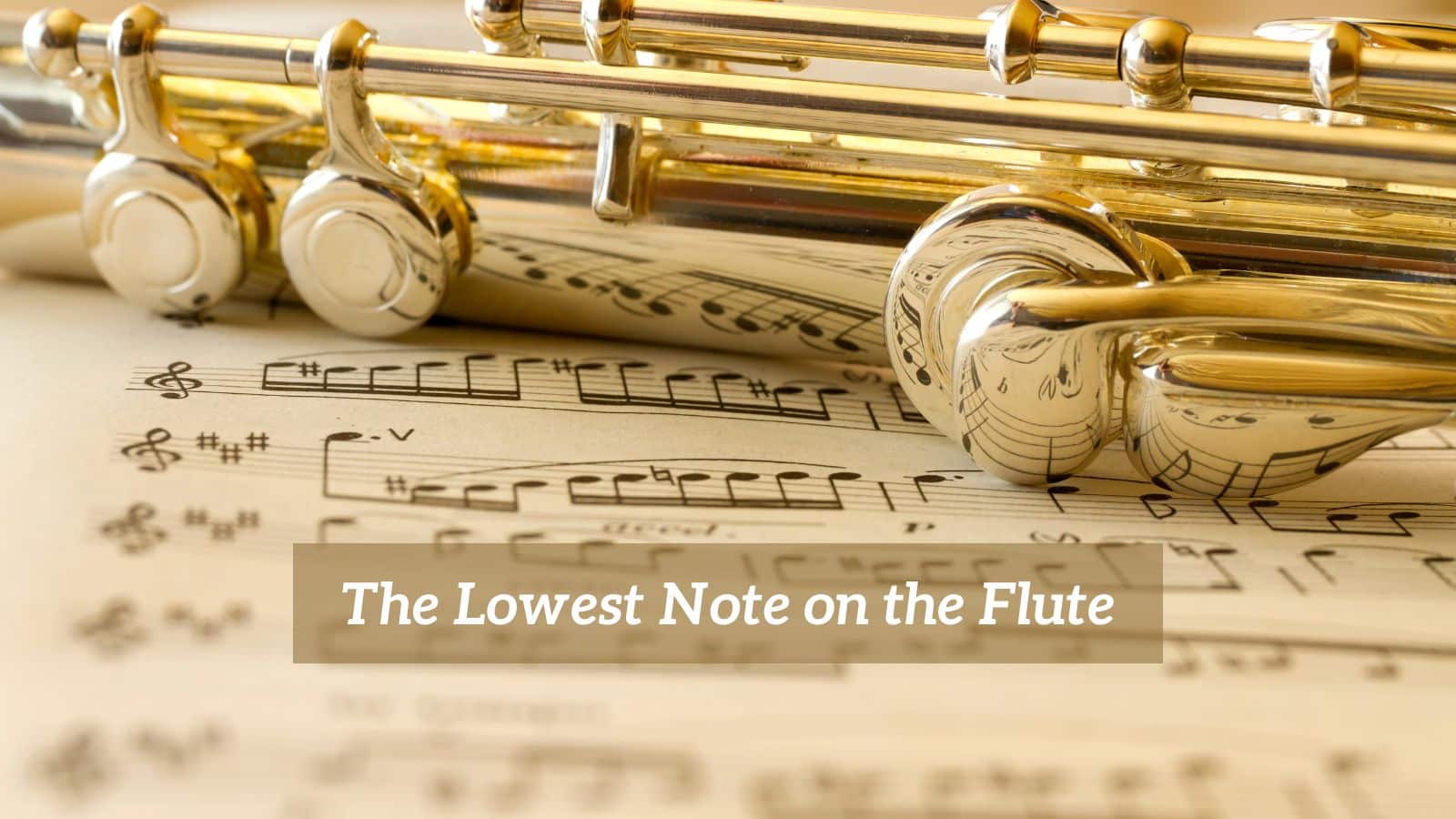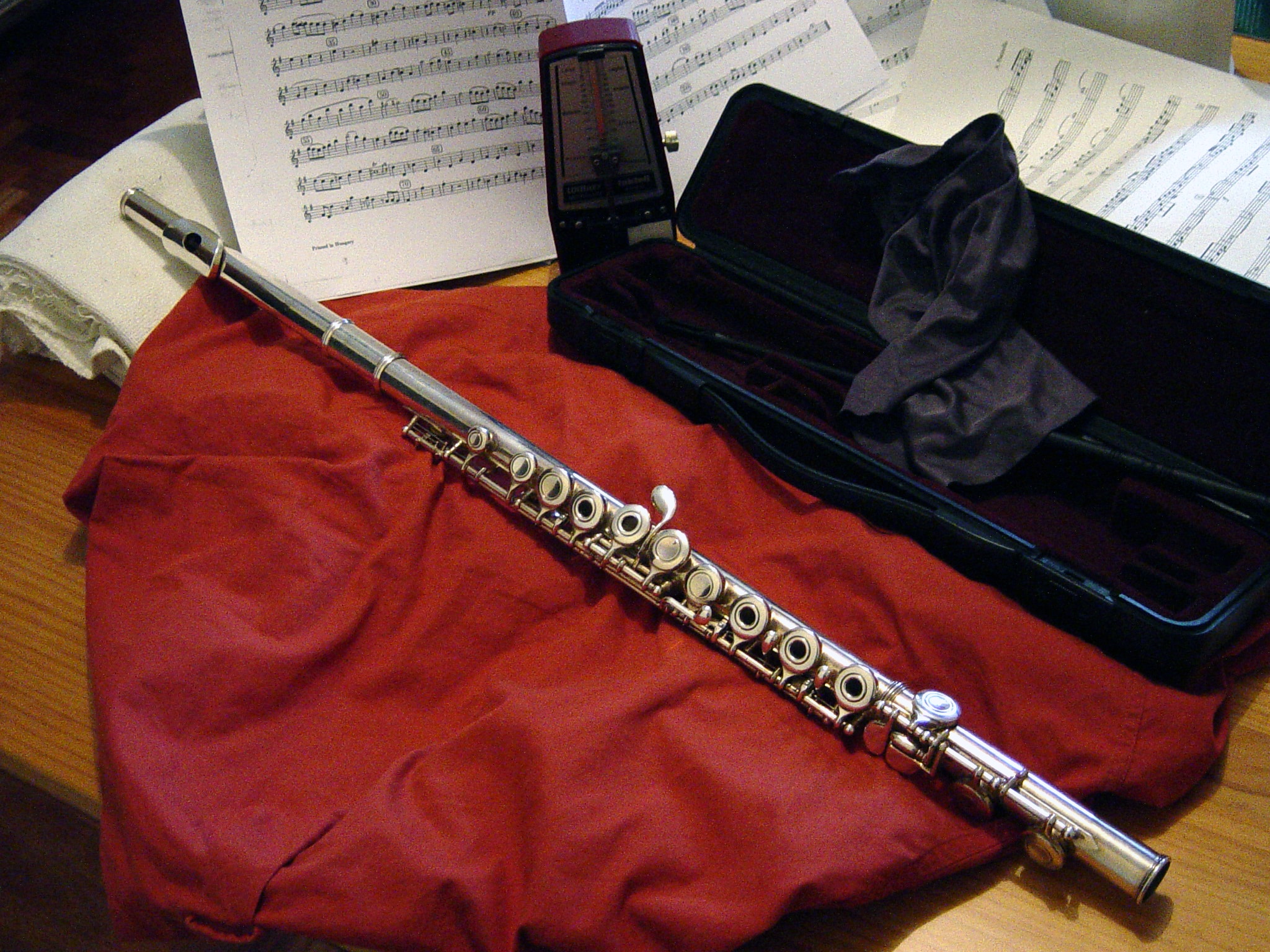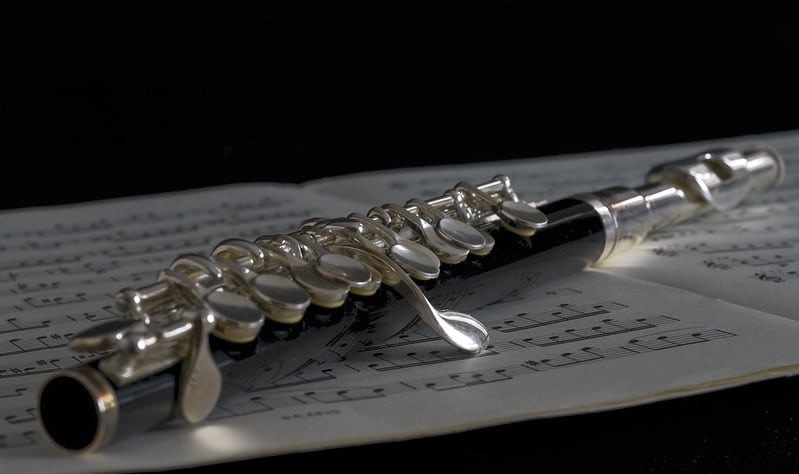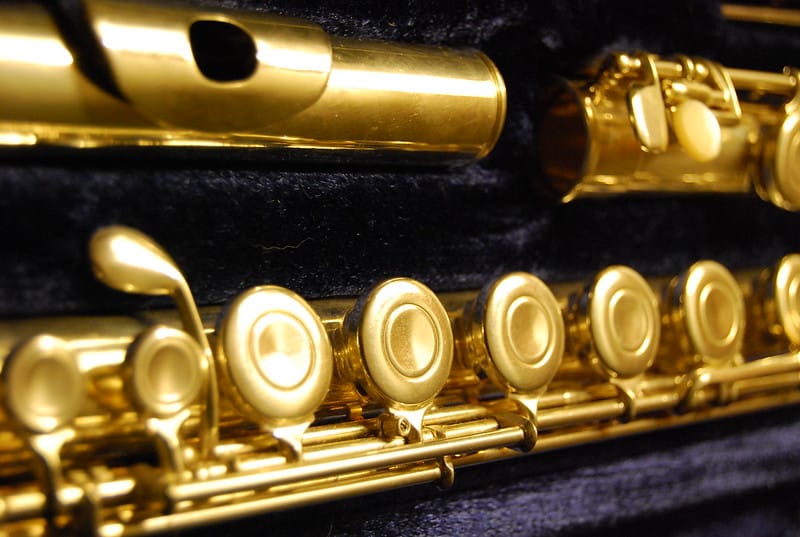
Every instrument has its own unique range. There are several types of flutes, each with their own range, including a concert flute, the most typical, as well as a piccolo, alto flute, and bass flute.
All of these instruments use the same general fingerings, but play higher or lower depending on the size of the instrument. Longer or bigger instruments play in a lower range, while smaller or shorter instruments play in a higher range.
When you think of a flute, most likely you’re picturing a concert flute. This flute is the most standard instrument, and most of the solo flute repertoire is written for it.
It is pitched in concert C, which means that if you play a C on the flute, it will correspond to the C on the piano. This means that no transposing is necessary for a musician playing a concert flute.
The foundation for this instrument is the Boehm flute, which was created in 1847. This flute has been improved and adapted over the years, but it serves as the model for the modern flute.
Upon its creation, its range spanned from a low C (C4), which is the same as a middle C on a piano, to a high C (C7), three octaves above middle C.
However, soon after the modern Boehm flute was released, a new option for a footjoint surfaced. This new footjoint is referred to as the B footjoint, as it lowered the range of the flute one half step to B3, by adding an extra key to the end of the flute.
These instruments were available as early as 1855, but have become more common in recent history.
The Lowest Note on the Flute
Typically, students play on C footjoints, as reaching the low B key is a stretch for young students with small hands and there is plenty of standard repertoire that does not incorporate low Bs.
Most standard professional level flutes now include B footjoints, though there are several well-known flutists who continue to play on C footjoints. Baroque, Classical, and Romantic repertoire does not go below a low C.
Low Bs appear in a few pieces in the standard modern repertoire, as well as numerous contemporary works. Throughout the twentieth century, the range of the flute has gradually been extended.
Today, C#7 and D7 (a half and whole step above the traditional high C) are often written in modern works; advanced flutists will be expected to play them. Some contemporary works even go as high as F7.
While the high end of the flute continues to be explored, the low B has stayed steady as the lowest available note on the concert flute.
Another common instrument in the flute family is the piccolo. While this instrument was not introduced into standard orchestral repertoire until Beethoven’s fifth symphony in 1808, it is now prominently featured in orchestral and solo music.
This instrument is significantly smaller than the flute, making its range higher by an octave, but it is still pitched at concert C.
The lowest note on a piccolo is a low D (D5), and the range typically continues up to a high C (C8), although the piccolo can technically reach higher notes.
The reason the piccolo does not descend to a low C or B like the flute is due to its size; the piccolo lacks the necessary keys to produce these notes.
Though there are piccolos that are customized to play a C5, these instruments are very expensive and largely unnecessary, as there is very little repertoire written for the piccolo that requires a low C.
The low range on the piccolo is not very loud; the piccolo is more frequently used in its higher range.
However, if a player works hard to find an embouchure, air stream, and air direction that produces a full sound in the low register, the resulting sound can be quite beautiful.
While much of the range of the concert flute and piccolo overlaps, the instruments have slightly different timbres, and composers over the decades have enjoyed exploring these contrasting soundscapes.
The lower flutes are slightly less common, though still played, especially in modern music. The alto flute is slightly larger than the flute and is pitched in concert G, which means that a C played on the alto flute will sound like a G on the piano.
The alto flute has a lower sound than the standard concert flute, and is strongly featured in twentieth century orchestral music such as Ravel’s Daphnis et Chloe and Stravinsky’s The Rite of Spring.
Unlike the piccolo, the alto flute is used in orchestral pieces such as these mostly for its lower register, as the standard flutes cannot reach it, though it has become increasingly popular with contemporary composers, who utilize the entire range of the instrument.
The alto flute’s range goes from G3, or the G below middle C on the piano, to G6, a fourth below the highest note on the concert flute, C7.
While this may not seem like a huge difference from a concert flute, once again, timbre comes into play. With its unique sound and low range, the alto flute sets a mood that sometimes higher flutes cannot.
The last and lowest flute commonly seen today is the bass flute, which returns to concert C. It is the opposite of the piccolo; rather than being pitched an octave higher than the concert flute, it is an octave lower, giving it a range of C3 to C6.
Like the alto flute, it is celebrated for its low range; its high range is often fairly weak. It is generally played in flute choirs, rounding out the bottom of the sound, and modern music.
Though there are other, bigger flutes such as the contrabass flute, the bass flute is the lowest of the readily available instruments in the flute family.
Flutes are generally seen as high voices; in the orchestra, flutes and piccolos are at the top of the score and play the highest pitches.
Though the low range is often hard to project, it can be a captivating sound when played well on any of these beautiful instruments of the flute family.




Beautiful, love flute. Is it possible to buy a B joint for a C joint flute?